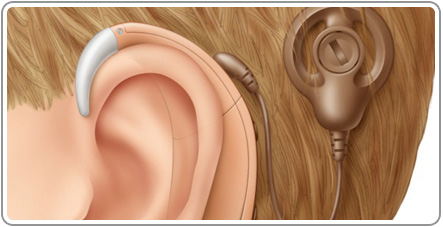
A cochlear implant is not a “sophisticated hearing aid”. It functions in a manner completely different from a hearing aid.
In a normal person, the sound waves reach the ear drum which is set into vibration. These sound waves are transmitted further through a chain of 3 bones in the middle ear to the inner ear or the cochlea. The ‘hair cells’ in the cochlea receive these sound impulses and convert them into electrical signals, which are then transferred onwards to the auditory nerve to be carried to the brain for interpretation.
If the cochlea and its hair cells are slightly damaged, the hair cells need more sound energy to produce adequate electrical signal. This is done by using a hearing aid which amplifies the sound. If the cochlear hair cells are so badly damaged that the loudest sound is not enough to generate adequate electrical potential needed for sound perception, a hearing aid fails to give adequate benefit. This is when the person needs a cochlear implant.
A cochlear implant is an electronic device used to enable sound perception and discrimination in patients who are profoundly deaf, and who do not have any benefit from hearing aids. A cochlear implant bypasses the damaged part of the inner ear and delivers electrical signals to the ganglion cells close to the auditory nerve. The auditory nerve relays these signals to the brain, and sound is perceived.Hearing through a cochlear implant is different from normal hearing and takes time to learn or relearn. The implant does not restore hearing or cure a hearing loss. However, it allows patients to understand sounds in the environment, and enjoy a conversation in person or by telephone.
